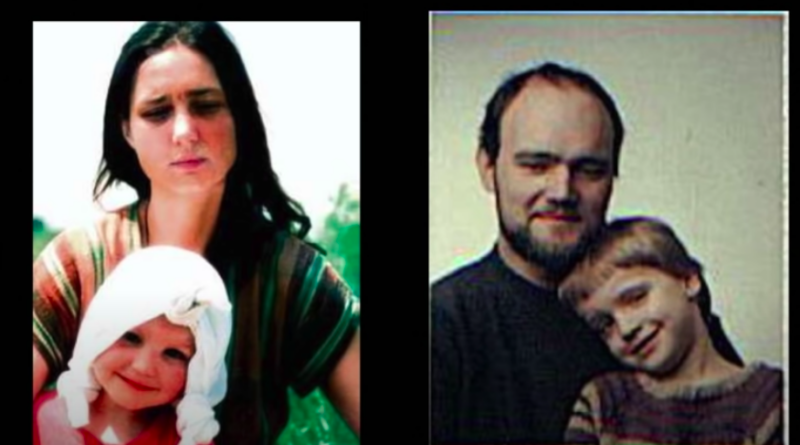Disappearance of Death Valley Germans in Death Valley National Park California
In the unforgiving terrain of Death Valley National Park, a tragedy unfolded in 1996 that still echoes in the minds of those who followed the case. The story of the Death Valley Germans—a family of four tourists who vanished without a trace—remains one of the most chilling unsolved mysteries of the desert. The family, consisting of a couple and their two young children, embarked on what should have been an adventurous vacation, but it quickly turned into a nightmare that neither they nor their rescuers would escape.
Who Were the Death Valley Germans?
The family at the center of this mystery were Egbert Rimkus (34), Cornelia Meyer (28), and their two children, 4-year-old Georg Weber and 10-year-old Max Meyer. They hailed from Dresden, Germany, and were in the United States for a summer vacation. The couple, both engineers, had chosen to explore California’s iconic national parks, including Death Valley, the hottest place on Earth.
Like many tourists, they were drawn to Death Valley’s unique and desolate beauty. However, what they may not have fully realized was how treacherous the landscape could be, especially in the peak of summer when temperatures soar above 120 degrees Fahrenheit.
The Disappearance
The last confirmed sighting of the family was on July 22, 1996, at a motel in the small town of Independence, California, located near the eastern edge of the Sierra Nevada Mountains. From there, they drove south into Death Valley in their rented Plymouth Voyager minivan. On July 23, the family’s plans took an ominous turn.
Despite the scorching temperatures, the family set out on a remote route that was unfamiliar to them, aiming to explore an area of Death Valley that was far off the beaten path. There are indications they may have been trying to reach a ghost town or historic mining site, but their exact destination remains unclear. What is known is that after this date, they were never seen alive again.
Discovery of the Abandoned Van
Months later, in October 1996, a National Park ranger stumbled upon their rented minivan abandoned in the heart of Death Valley, deep inside Anvil Canyon. The van had flat tires and was found stuck in a sandy wash, miles away from the nearest paved road. Inside the vehicle were remnants of the family’s belongings, including maps, souvenirs from Disneyland, and a diary, but there was no sign of the family themselves.
Strangely, the van’s air conditioning was broken, and it appeared the family had run out of water. This discovery led to one of the largest search-and-rescue operations in Death Valley’s history, yet despite extensive efforts, no trace of the family could be found. The extreme heat, vast distances, and dangerous conditions of Death Valley hindered the search at every turn.
The Search Efforts and Theories
Authorities initially theorized that the family might have tried to walk out of the desert after their vehicle became incapacitated. However, with temperatures reaching deadly levels and little available water, their chances of survival would have been slim. Death Valley’s rough and uneven terrain also presented a significant challenge to the search teams, both on foot and by air.
Rescue teams covered over 200 square miles, searching for signs of the family, but as days turned into weeks and then months, hope dwindled. Theories began to swirl about what might have happened to them. Some speculated that they had died from exposure, while others questioned whether foul play could have been involved.
Despite these efforts, the case quickly went cold. The van provided few clues, and there was no sign of where the family had gone after leaving their vehicle behind. The unforgiving desert seemed to have swallowed them whole, leaving behind only questions and a sense of unease.
Breakthrough in 2009: The Bones in the Desert
For over a decade, the fate of the Death Valley Germans remained a mystery. However, in 2009, a surprising development offered a potential breakthrough. A pair of experienced Death Valley explorers, Tom Mahood and Les Walker, decided to investigate the case on their own. Using the information available from the original search and their knowledge of the area, they retraced the family’s steps, venturing into the remote Anvil Canyon where the van had been found.
After weeks of searching, the men came across human bones scattered in a remote part of the canyon, miles from where the van had been discovered. Near the remains, they also found personal items linked to the missing family, including a wallet and shoes. While the remains were incomplete, DNA testing confirmed that at least some of the bones belonged to Cornelia Meyer and one of the children. This discovery, though tragic, provided some closure for the mystery of the Death Valley Germans.
What Went Wrong? Theories of Their Demise
Though the bones offered a somber resolution to some of the questions, they also sparked new ones about what exactly had happened. Many experts believe the family may have fallen victim to a series of poor decisions compounded by the harsh conditions of Death Valley.
One prevailing theory is that after their van became stuck in the sand, the family, desperate and with limited supplies, attempted to walk out of the desert in search of help. This decision, while understandable, would have been disastrous given the extreme heat and lack of water in the area. Without proper preparation or knowledge of the terrain, they likely became disoriented and succumbed to heat exhaustion or dehydration within hours.
Another theory is that the family may have miscalculated the difficulty of the remote route they had chosen. Anvil Canyon is not a place for casual exploration; it’s a rough, isolated area with few navigational aids and no easy way to call for help if something goes wrong.
The Role of Human Error
Ultimately, the tragic story of the Death Valley Germans underscores the importance of preparation and caution when venturing into remote wilderness areas like Death Valley. The family, though experienced engineers, seemed to underestimate the danger posed by the desert’s extreme heat and rugged terrain. The decision to leave their van—rather than stay and wait for help—proved to be a fatal one.
In Death Valley, survival often depends on having a reliable vehicle, plenty of water, and the knowledge to stay put when things go wrong. In this case, the combination of a broken-down vehicle, oppressive heat, and an attempt to walk to safety spelled doom for the family.
Lingering Questions and The Legacy of the Case
Despite the discovery of the remains, some questions still remain unanswered. Why did the family choose such a remote and dangerous route? Were they trying to reach a specific destination, or did they simply get lost? What were their final hours like as they wandered through one of the most inhospitable places on Earth?
While some of these questions may never be fully answered, the story of the Death Valley Germans serves as a sobering reminder of the power of nature and the limits of human endurance. Their disappearance captivated the public’s imagination, and their story continues to resonate with those who visit Death Valley.
The Importance of Safety in Death Valley
The tragic fate of the Death Valley Germans has prompted park authorities to emphasize the importance of preparation when visiting the area. Death Valley is one of the hottest and most desolate places on Earth, and even experienced travelers can find themselves in life-threatening situations if they’re not fully prepared.
Visitors to Death Valley are now advised to carry plenty of water, stay on paved roads, and avoid traveling during the hottest parts of the day. Additionally, park rangers warn against venturing into the park’s remote areas without detailed maps and a clear plan, as the terrain can quickly become disorienting.
Conclusion
The story of the Death Valley Germans is a haunting reminder of how quickly things can go wrong in the wilderness. Though the discovery of their remains in 2009 provided some closure, it also serves as a cautionary tale for anyone who dares to explore the world’s most extreme environments. The desert may be beautiful, but it is also unforgiving—a place where the margin for error is dangerously thin.
Their tragic story continues to resonate today, reminding us of the importance of preparation, respect for nature, and the harsh realities of survival in one of the Earth’s most hostile landscapes.
Discover more from City Towner
Subscribe to get the latest posts sent to your email.




